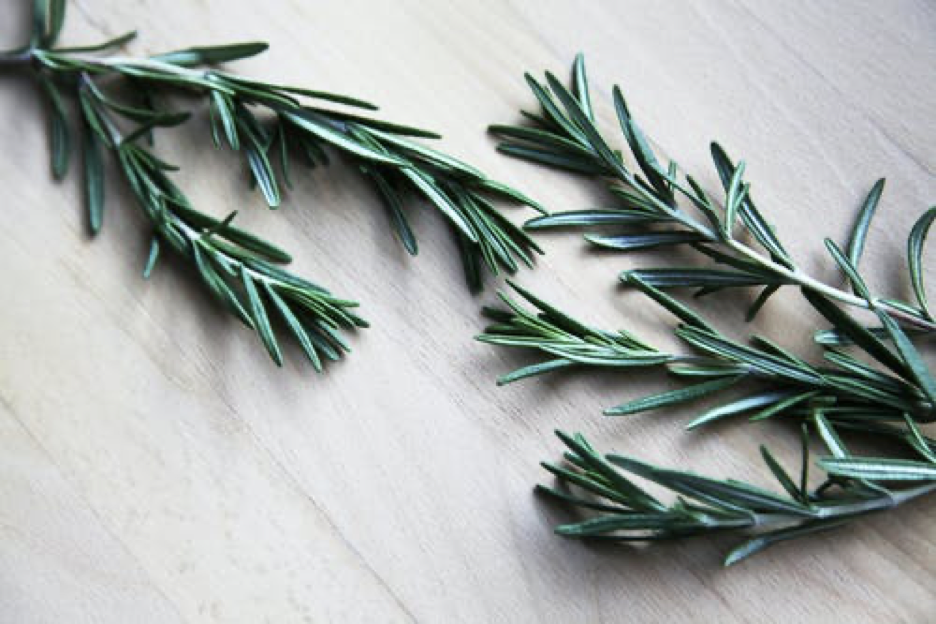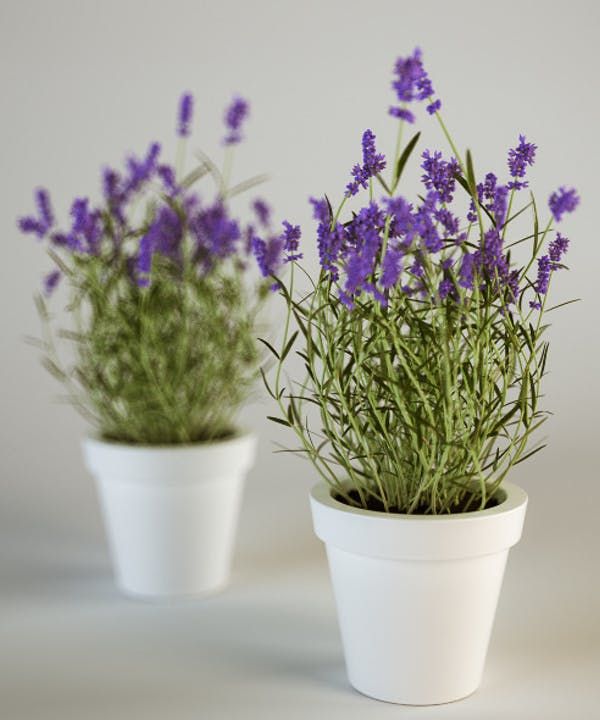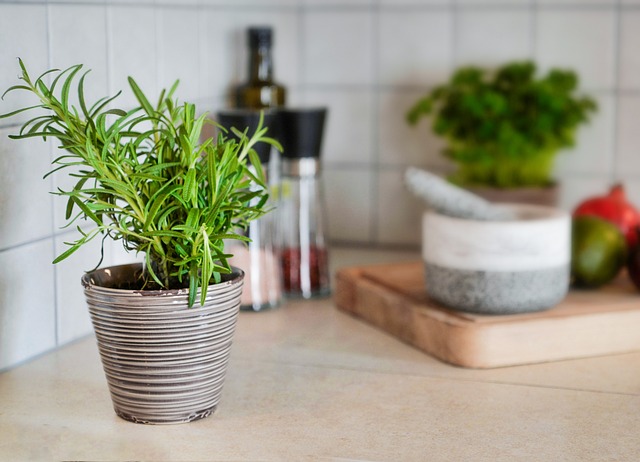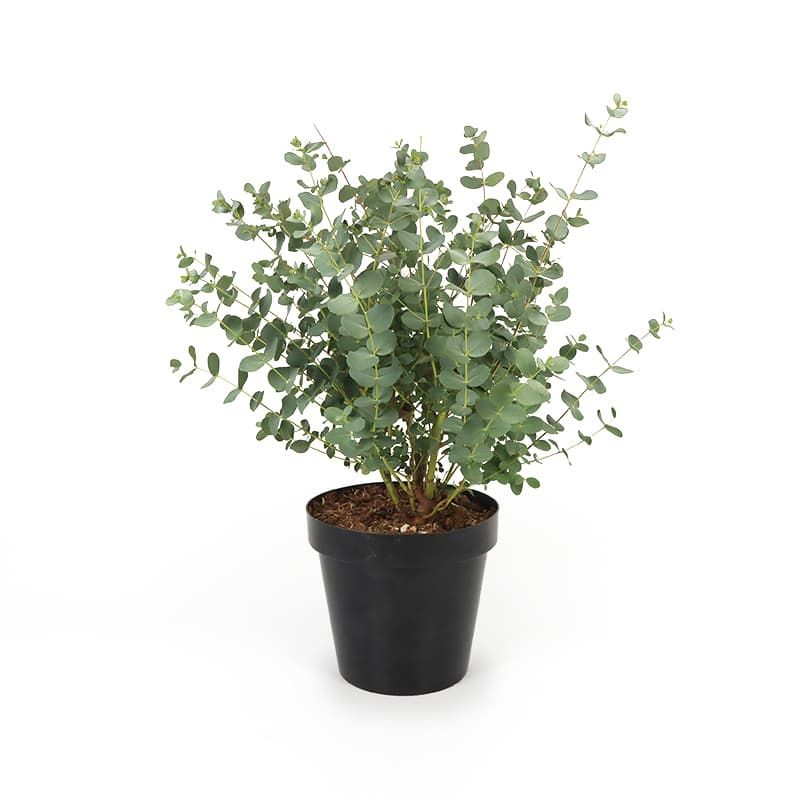With the change of season from Summer into Fall and Winter many of you might be thinking about growing aromatic herbs indoors for the Winter. Good for you! Bringing your aromatic and flavorful herbs indoors doesn’t just give you easy access for cooking and tea but adds benefits for your health.

We know certain houseplants provide cleansing for our indoor air quality. Peace Lily, Snake Plants and Spider Plants can help purify the air in our homes by absorbing pollutants and toxins and breaking them down. Did you know that many of our favorite herbs can do all that and more? Read on to find out how and which ones you might choose.
All indoor plants emit oxygen, adding fresh air for us to breathe. By absorbing the carbon dioxide that we exhale and then emitting oxygen, plants help keep the air fresh and support respiratory health. Herb plants can add more oxygen to our indoor atmosphere leading to easier breathing.

Aromatic herbs are full of essential oils that give them their lovely scent and other properties. There are volatile compounds in herbs that are contained in their essential oils. These oils contain anti-microbial and anti-fungal properties which, when emitted into the air, can reduce air borne microbes and provide us with cleaner air. Two of the best aromatic herbs for this are Rosemary and Eucalyptus.
Aromatic herbs also absorb pollutants and toxins found in the air. The air inside our homes can be filled with chemicals that off gas from upholstery, carpets, mattresses and more. These chemicals can impact our health in negative ways. The leaves and roots of the herb plants capture these chemicals and break them down, leaving us with cleaner and more pure air.
Which herbs to choose?
There are many aromatic herbs to choose from to grow indoors. Aromatic herbs are those with strong scents and flavor that we might also use in aromatherapy through an infuser or even a simmering pot on a wood stove.
Lavender

Lavender is one of the most popular herbs we grow. We know it for its calming and soothing scent, but it is also a powerful anti-fungal, antiseptic and anti-microbial herb that can help reduce pathogens in the air. Just like Lavender can help with wound care, the anti-bacterial properties of Lavender can cleanse the air.
To grow Lavender indoors, you’ll need a pot with good drainage, a well-draining potting mix and a spot with lots of light. It’s important to only water your Lavender plant when it is dry. Do not keep it constantly moist or it might rot. If you don’t have a spot with a lot of light- remember, Lavender grows in full sun outdoors- think about a light source. Grow lights are not costly and make a world of difference for an indoor plant. You’ll be able to gently harvest some of the blossoms on your plant for tea or to add to a shortbread recipe!
Rosemary

Rosemary is a strong aromatic herb. Just a little bit will season a roast, potatoes or poultry. We use this herb today much as our ancestors used it. Not only do we cook with it, we use it to purify and cleanse our air. Rosemary has anti-microbial properties and was used in hospitals to help prevent infection.
Rosemary is uplifting and awakening. It helps us concentrate and boosts our mood. Place your Rosemary plant where you can run your hand along it as you pass releasing the aroma into the air.
To grow Rosemary indoors, use a pot with good drainage, a potting mix that drains well and place the plant in a sunny location. Rosemary grows in full sun outdoors, so it needs lots of light indoors. Only water the pot when the plant is dry. Water it thoroughly and let it dry out before watering again. If you see yellowing needles, back off watering and try and give it more light. A grow light can be very helpful.
Eucalyptus

Photo Courtesy of Taste of Sussex
While Eucalyptus is not as common a houseplant as some other herbs, it does well indoors and has great benefit. You’ll want to find a shrub-type variety and grow it in a fairly large pot in a spot with good light. Water it only when it’s dry and it will reward you with less pollution and clearer air.
Many cultures use Eucalyptus smoke or incense to purify the air. Eucalyptus was used extensively during the influenza epidemic following WWI due to its anti-microbial and antiseptic properties. The active aromatic compound in Eucalyptus is Eucalyptol. It is especially effective against respiratory problems which is why it found its way into the common, OTC product Vicks VapoRub, among others.
General Note on Growing Herbs Indoors
The aromatic herbs profiled here all need good drainage. That means a pot with drain holes and a well-draining potting mix. You’ll likely want a dish under your plants to protect the surface under them. While it’s tempting to just give your plants a little water now and then, the best way to water the plants is to water thoroughly, let the pot drain, then dump any water remaining in the dish. If you have small plants and can put them in a sink or bathtub, that works well. Water thoroughly, let them drain, then put them back in their growing spot. If you have a sprayer at your sink, give the whole plant a bath while watering. They’ll love it. I’ve been known to put indoor plants in the shower and turn it on and let them get “rained” on. That makes them so happy!
You can fertilize your plants with half strength liquid plant food about once a month. Or when potting them up use a time release fertilizer as per the directions on the package and you won’t have to worry about fertilizing them for the rest of the Winter.
In Conclusion
I hope you try some of these plants for your indoor garden this Winter. Indoor plants give your home a welcoming air. The aroma and usefulness of the herbs you grow indoors will bring benefit to everyone inside the house.
